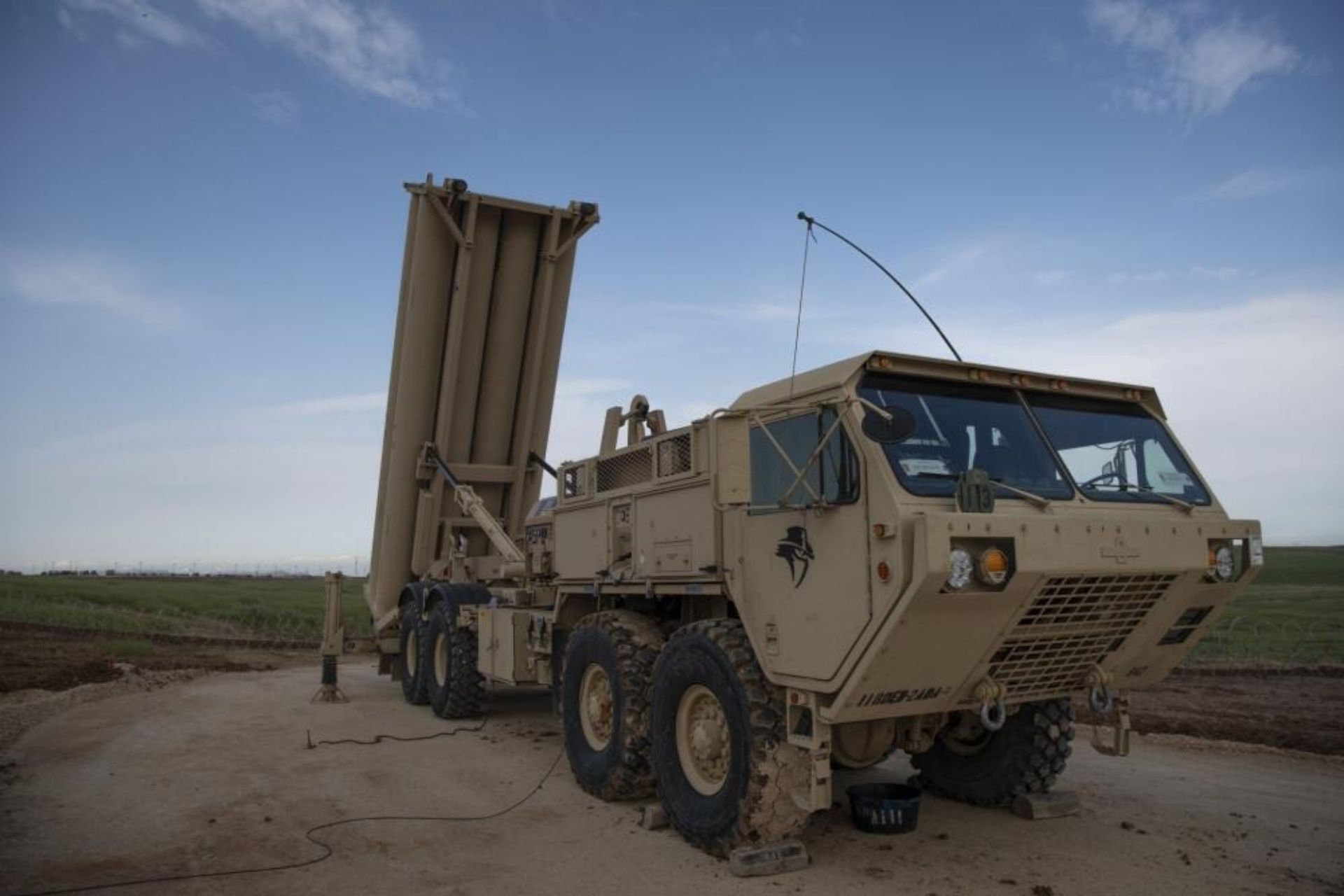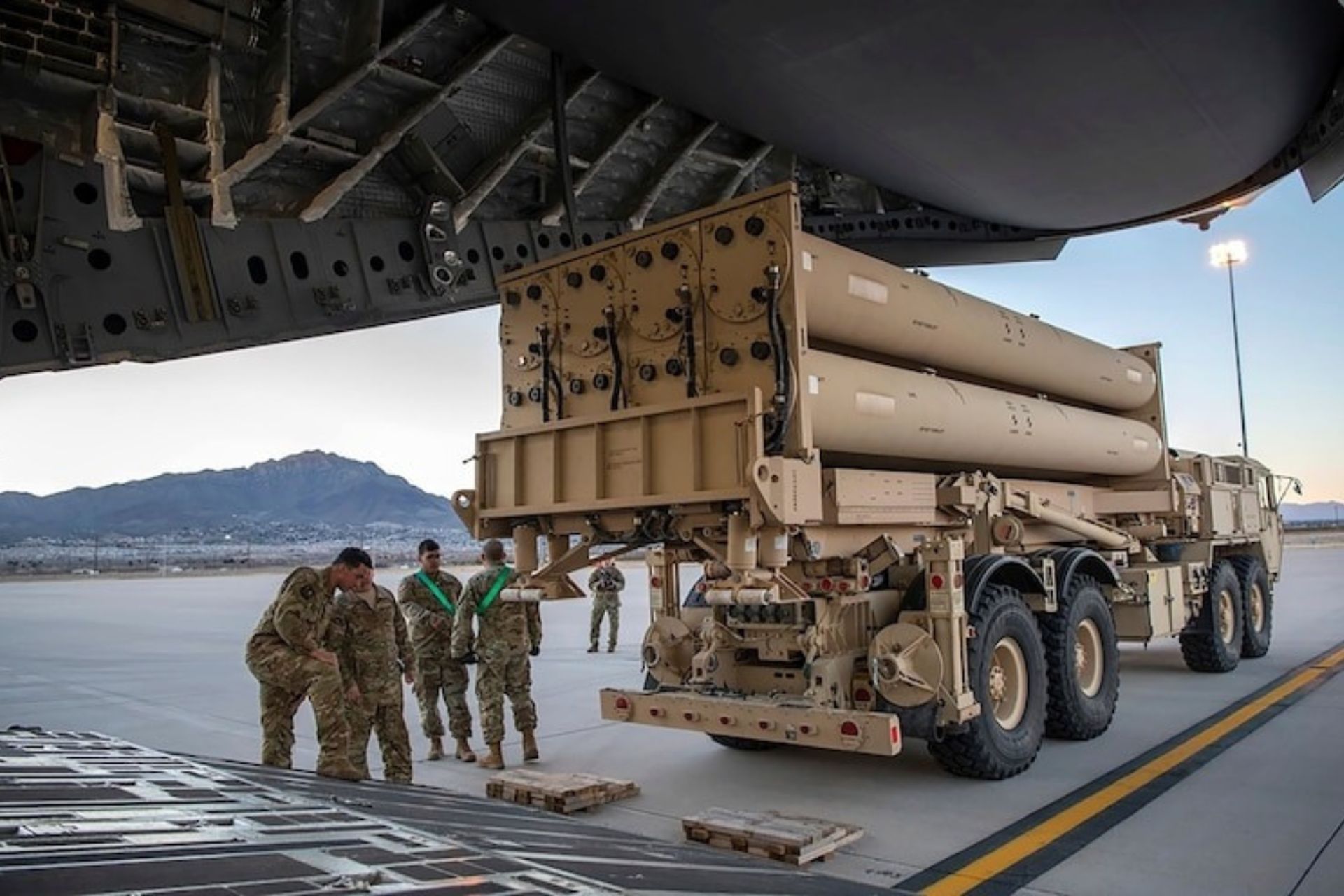Breaking News
US Says THAAD Anti-Missile System is Now in Place in Israel.
On October 21, 2024, U.S. Secretary of Defense Lloyd Austin announced during his visit to Ukraine that the Terminal High Altitude Area Defense (THAAD) missile system was now in place, though he did not confirm if it was fully operational. This system was deployed to Israel on September 25, 2024, in response to recent escalations between Israel and Iran. The deployment followed Iran’s launch of approximately 200 ballistic missiles toward Israel earlier in October, an event seen as retaliation for Israeli strikes on Hezbollah leaders in Lebanon and the death of a Hamas leader in Tehran.

The US military deploys a THAAD missile defense system in Israel, in March 2019 (Picture source: US DoD)
The THAAD system, a key component of the U.S. military's layered air defense network, has now been positioned in Israel to enhance the country’s already strong missile defense capabilities. According to Austin, the system is "in place" and can be quickly made operational, though specific details on its current readiness were not provided. THAAD adds an important layer to Israel’s defense system, complementing existing systems like the Patriot by covering larger areas and intercepting threats at ranges of up to 200 kilometers.
The THAAD (Terminal High Altitude Area Defense) missile system is designed to intercept and destroy short-, medium-, and long-range ballistic missiles at altitudes of up to 150 km and ranges between 150 and 200 km. It is a transportable ground-based system equipped with eight missiles, an AN/TPY-2 radar for target detection, and a control and communication center to manage operations. THAAD uses hit-to-kill technology, where the missile's kinetic energy neutralizes incoming warheads either within or outside the atmosphere.
Developed by Lockheed Martin, THAAD was first deployed in 2008. Several U.S. allies, including Saudi Arabia, the United Arab Emirates, and more recently Germany and Japan, have acquired or integrated THAAD into their air defense systems. With its high mobility and ability to intercept at high altitudes, THAAD plays a critical role in protecting military forces, infrastructure, and civilian populations from ballistic missile threats.
Israeli sources indicate that the system is already operational, with up to three batteries in use. These reports come amid rising concerns about potential Iranian retaliation, which could prompt an Israeli military response. While the scope of future Israeli strikes remains unclear, Austin emphasized the importance of de-escalating tensions while continuing to meet Israel’s defense needs. He also noted that the U.S. is diplomatically working to reduce tensions between Iran and Israel, though any military actions would ultimately be Israel’s decision.

US Air Force shows a US Army Terminal High Altitude Area Defense at Fort Bliss, Texas, on Feb. 23, 2019 (Picture source: US DoD)
The Pentagon had previously confirmed the arrival of an advance team and essential components needed to operate the THAAD system in Israel, with additional personnel and equipment arriving in the days following. This deployment involves approximately 100 U.S. personnel, putting American forces on the ground in Israel and deepening U.S. involvement in the region. The deployment of THAAD signals a significant shift as the U.S. moves from a supportive role to a more active defense posture, potentially placing American forces at greater risk should hostilities intensify.
Developed in the 1990s and operational since 2008, this missile defense system includes truck-mounted launchers, radar systems, and fire control components. Each battery consists of six launchers, each equipped with eight interceptors. THAAD is specifically designed to intercept and destroy short-, medium-, and long-range ballistic missiles at high altitudes, providing a critical defense layer against Iranian missile threats.
The deployment of THAAD to Israel demonstrates the continued U.S. commitment to Israel’s defense, particularly in light of the growing missile threats from Iran. The Pentagon has confirmed that the THAAD system will soon be fully operational and capable of defending Israeli airspace. Despite the complexity of the situation, the U.S. continues to prioritize diplomatic efforts aimed at reducing tensions while maintaining a robust defense posture in the region.
This development also coincides with a warning from U.S. Secretary of State Antony Blinken and Defense Secretary Lloyd Austin to Israeli officials, urging them to improve humanitarian conditions in Gaza. The U.S. has made clear that continued military support will depend on significant efforts to address the humanitarian crisis, and Israel has since facilitated the entry of aid trucks into Gaza.


























